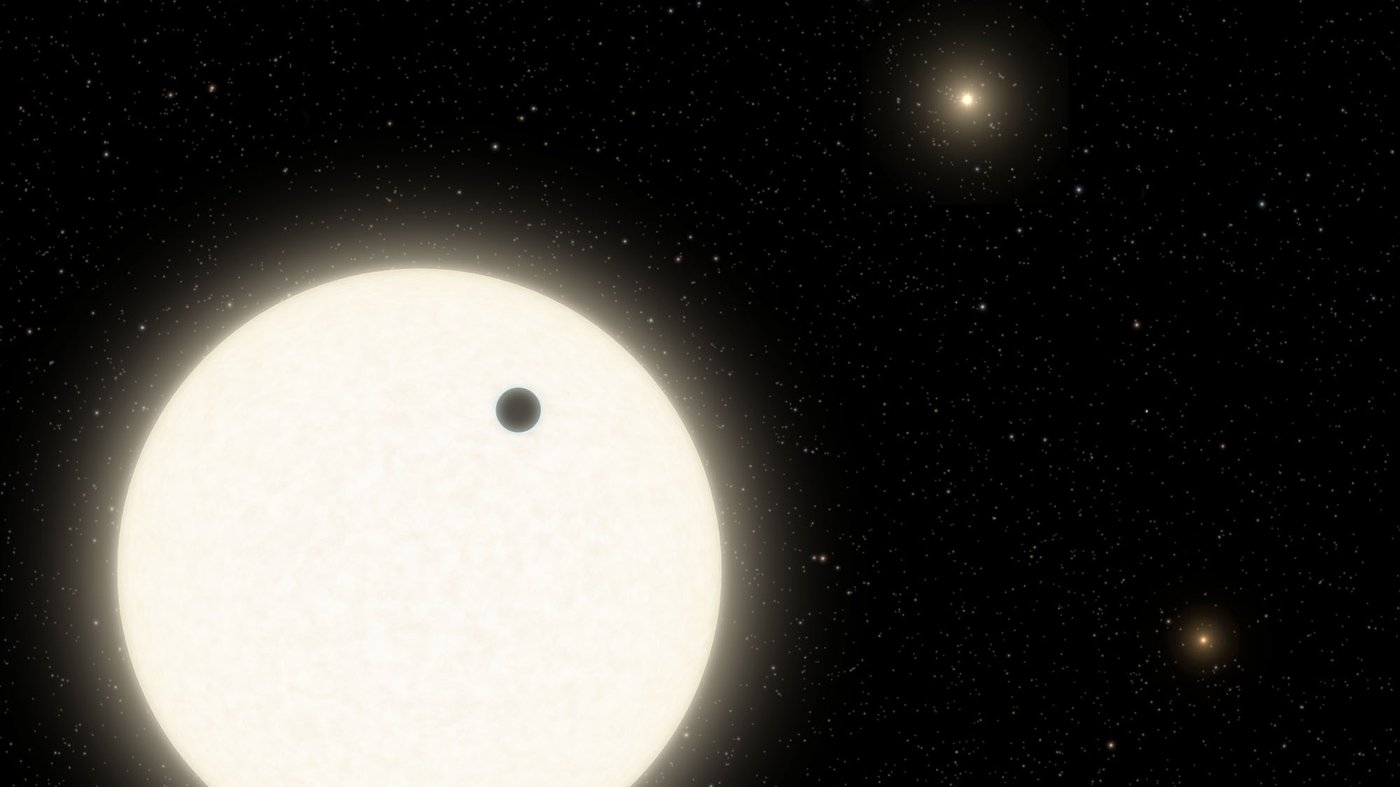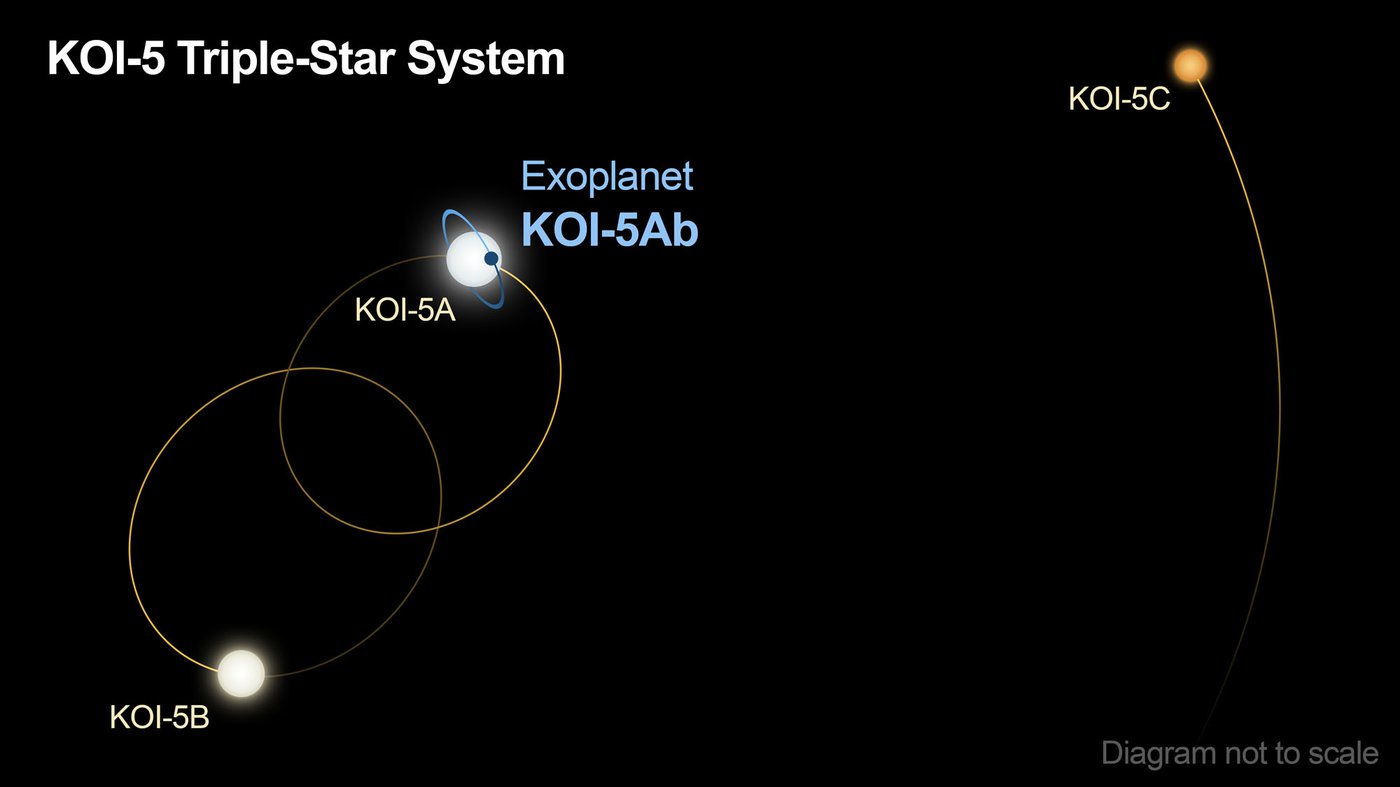
A newfound exoplanet is a real blast from the past.
Astronomers just confirmed the existence of KOI-5Ab, which was first flagged as a potential planet by NASA's pioneering Kepler space telescope way back in 2009.
The elusive alien world was the second "candidate" ever identified by Kepler, which hunted for planets on two different missions from 2009 through 2018. Kepler used the "transit method," spotting the telltale brightness dips caused when alien worlds crossed their host stars' faces from the spacecraft's perspective.
Related: Kepler's 7 greatest exoplanet discoveries
This work was incredibly productive. Nearly two-thirds of the roughly 4,300 known exoplanets were discovered by Kepler, and analyses of the telescope's huge dataset continue to turn up new finds.
KOI-5Ab slipped through the cracks more than a decade ago partly as a result of that data deluge. The Kepler team spotted an apparent transit signal belonging to a roughly Neptune-size planet that whipped around a sunlike star every five Earth days. This star and the apparent planet lie about 1,800 light-years from Earth, in the constellation Cygnus.
But further investigation revealed that the parent star had a companion star, making analyses considerably more difficult. And there were many other candidates to vet.
Get the Space.com Newsletter
Breaking space news, the latest updates on rocket launches, skywatching events and more!
So, KOI-5Ab "was quickly abandoned, mostly because it got complicated," David Ciardi, chief scientist of NASA's Exoplanet Science Institute, which is located at the Infrared Processing and Analysis Center at the California Institute of Technology in Pasadena, said during a news conference Monday (Jan. 11) at the 237th meeting of the American Astronomical Society (AAS).
Indeed, KOI-5Ab was even more complicated than researchers realized at the time. By 2014, Ciardi and other scientists had determined that the KOI-5 system actually harbors three stars. And it still wasn't clear if KOI-5Ab actually existed, or if the 2009 signal was generated by one of the companion stars.
KOI-5Ab came back into the spotlight thanks to Kepler's successor, NASA's Transiting Exoplanet Survey Satellite (TESS), which launched in 2018. TESS also spotted a signal in the KOI-5 system, generated by a potential planet with an orbital period of five Earth days.
"I thought to myself, 'I remember this target,'" Ciardi said in a statement.
So he took a hard look at all the information on the system — the transit observations by Kepler and TESS, as well as radial-velocity data gathered by ground-based instruments such as the Keck Observatory in Hawaii. (Radial-velocity measurements quantify how much an orbiting planet tugs on its parent star gravitationally. Such work can reveal the approximate mass of an exoplanet, whereas transit observations give a rough idea of its size.)
Related: 7 ways to discover alien planets

Taken together, the data confirmed that KOI-5Ab is indeed a planet, one that's about half as massive as Saturn. The new research, which Ciardi detailed at the AAS meeting on Monday, also revealed other details of the KOI-5 system. For example, the main star that KOI-5Ab orbits (star A) has a close companion (star B); this duo orbits each other once every 30 Earth years. The third star in the system (star C) is much more distant, orbiting the A-B pair every 400 years.
In addition, KOI-5Ab's orbital plane is misaligned with that of star B, suggesting that the star may have given the planet a gravitational boot sometime in the system's history, researchers said. (Stars and their planets form from the same cloud of gas and dust, so their orbital planes generally match initially.)
KOI-5Ab is far from the first planet to be discovered in a multistar system. But such systems seem to host planets less frequently than do single-star solar systems like our own, for reasons that scientists don't yet understand.
"Stellar companions may partially quench the process of planet formation," Ciardi said. "We still have a lot of questions about how and when planets can form in multiple-star systems and how their properties compare to planets in single-star systems. By studying the KOI-5 system in more detail, perhaps we can gain insight into how the universe makes planets."
Mike Wall is the author of "Out There" (Grand Central Publishing, 2018; illustrated by Karl Tate), a book about the search for alien life. Follow him on Twitter @michaeldwall. Follow us on Twitter @Spacedotcom or Facebook.
Join our Space Forums to keep talking space on the latest missions, night sky and more! And if you have a news tip, correction or comment, let us know at: community@space.com.

Michael Wall is a Senior Space Writer with Space.com and joined the team in 2010. He primarily covers exoplanets, spaceflight and military space, but has been known to dabble in the space art beat. His book about the search for alien life, "Out There," was published on Nov. 13, 2018. Before becoming a science writer, Michael worked as a herpetologist and wildlife biologist. He has a Ph.D. in evolutionary biology from the University of Sydney, Australia, a bachelor's degree from the University of Arizona, and a graduate certificate in science writing from the University of California, Santa Cruz. To find out what his latest project is, you can follow Michael on Twitter.









